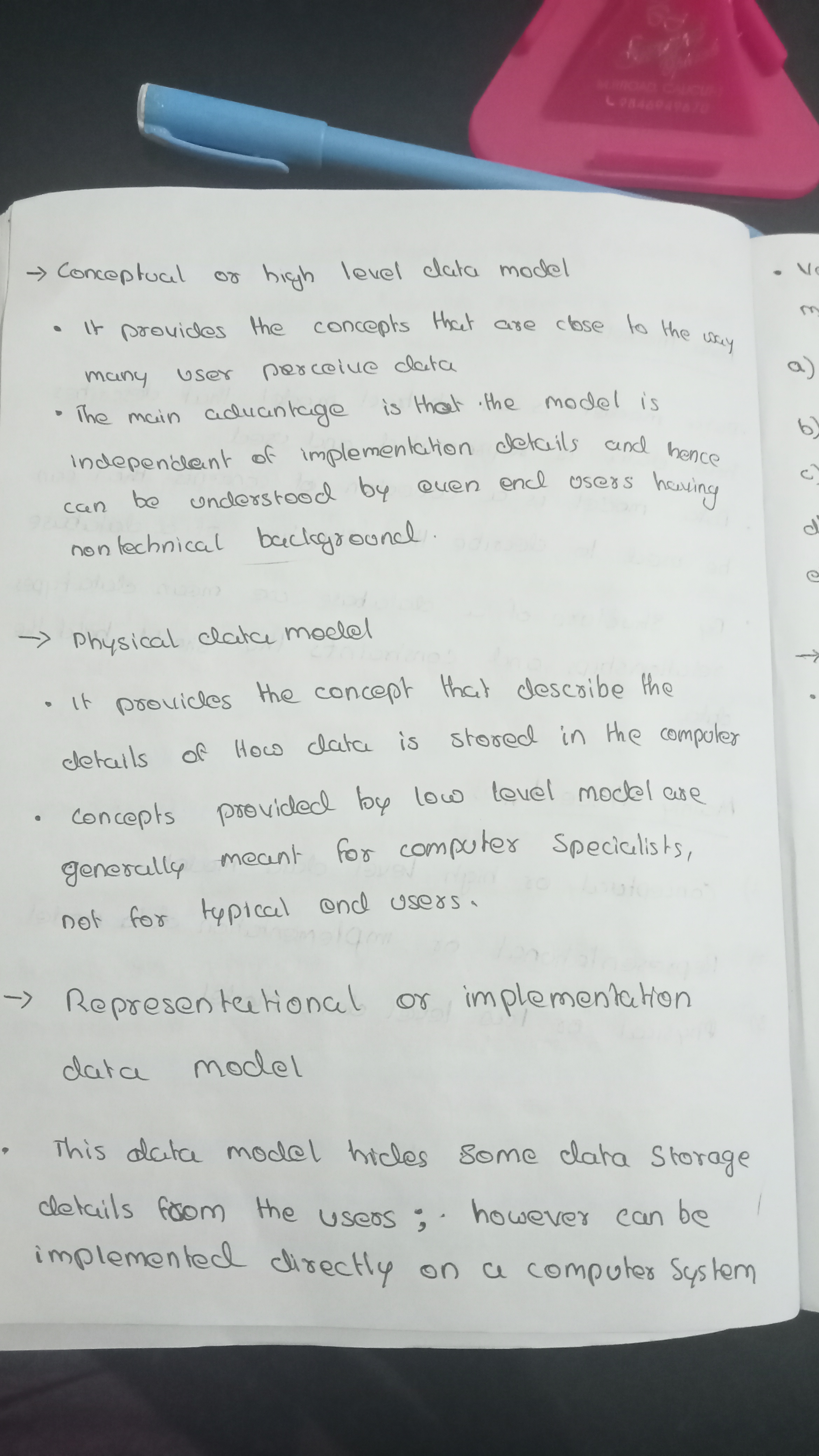What are the different types of data models: conceptual, physical, and representational, and what are their characteristics?

Understand the Problem
The question appears to be focused on explaining different types of data models, specifically conceptual, physical, and representational data models, including their characteristics and purposes.
Answer
Conceptual, Physical, and Representational models vary by abstraction and implementation focus.
Conceptual data models provide a high-level view that is independent of implementation and easily understood by non-technical users. Physical data models describe how data is stored in detail, primarily for specialists. Representational data models focus on data storage specifics and are directly implementable on computers.
Answer for screen readers
Conceptual data models provide a high-level view that is independent of implementation and easily understood by non-technical users. Physical data models describe how data is stored in detail, primarily for specialists. Representational data models focus on data storage specifics and are directly implementable on computers.
More Information
Conceptual models are more abstract, focusing on user perspectives and high-level concepts. Physical models are detailed for implementation, involving the exact data storage schema. Representational models balance user perspectives and storage specifics, often utilized in system implementations.
Tips
A common mistake is confusing logical and representational models. Logical focuses on structure without technical implementation, whereas representational considers implementable elements.
Sources
AI-generated content may contain errors. Please verify critical information